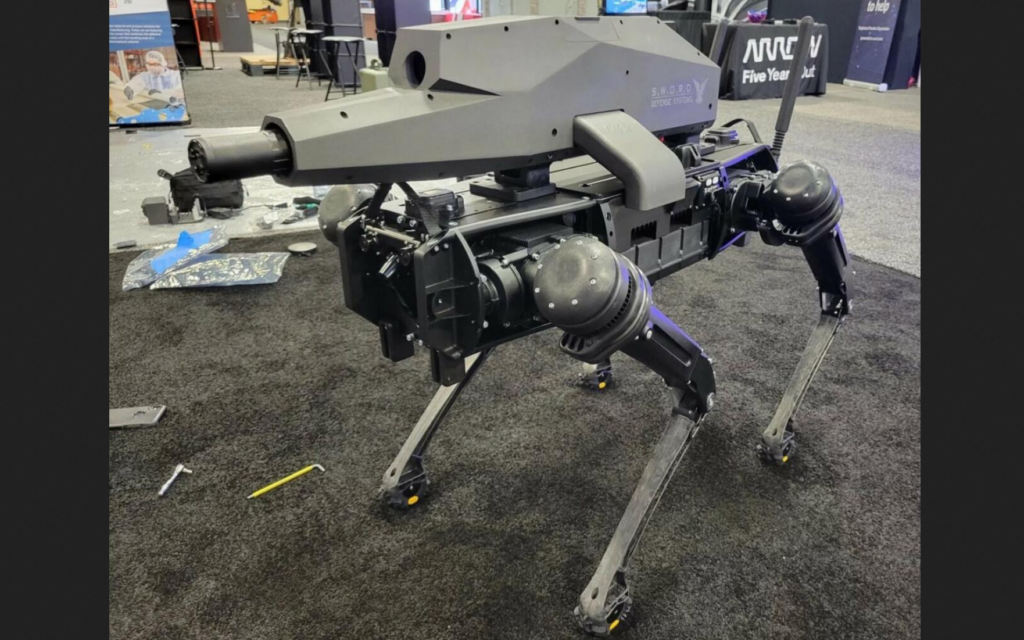The escalating tensions in the Middle East pose a significant threat of regional conflict, primarily centered around Israel and Iran. President Biden’s recent discussions with Israel hint at potential military action against Iran’s oil facilities in response to ongoing provocations. With Iran launching ballistic and hypersonic missiles, the situation has heightened fears of a wider confrontation. The involvement of Iran-backed terror organizations launching drone attacks further complicates the landscape, targeting both Israel and commercial maritime routes. This multifaceted conflict could transform the region into a modern battlefield, reminiscent of scenes from video games like “Call of Duty: Modern Warfare,” where advanced technologies play a crucial role.
As tensions mount, the use of sophisticated weaponry, including “kamikaze drones,” has increased. These drones, known for their loitering capabilities, have been launched in significant numbers, showcasing the evolving warfare strategies employed by various factions in the region. The drones represent a shift in military tactics, focusing on precision strikes against key targets. The maritime sector, particularly in the Southern Red Sea, has witnessed a surge in attacks, further emphasizing the interconnectedness of regional security challenges and the maritime domain, vital for global trade.
Moreover, the battlefield is experiencing a technological revolution with the introduction of armed robotic systems, like quadrupedal unmanned ground vehicles (Q-UGVs) designed for combat scenarios. These technologies, evident in military exercises across the Middle East, highlight the increasing reliance on autonomous systems equipped with advanced sensors and artificial intelligence. The US Army, for example, has been actively testing armed robo-dogs alongside counter-drone platforms, reflecting a broader trend of integrating cutting-edge technologies into military operations. This shift is not limited to the United States, as other countries, including China and various European nations, explore the deployment of similar robotic systems, indicating a global race to leverage technology in warfare.
The rise of robotic systems has caught the attention of numerous nations, with China demonstrating its own robotic capabilities. The Chinese military’s displays of armed robot dogs loaded with weapons during joint drills underscore the growing interest in unmanned systems for combat. As military exercises become increasingly sophisticated, observers note that nations are actively investing in such technologies to gain a strategic edge. The emphasis on robotic systems indicates a broader trend toward automation in warfare, where human soldiers may complement or be replaced by machines in various combat scenarios.
The incorporation of advanced technologies like armed robot dogs raises significant ethical and operational questions about modern warfare. While these systems can enhance battlefield efficiency, their deployment also poses risks, including potential malfunctions or misinterpretations of commands, leading to unintended consequences. As military forces around the world adapt to rapidly evolving technological landscapes, debates surrounding the implications of robotic warfare grow louder. The potential for increased casualties and collateral damage highlights the urgent need for robust discussions on the ethical frameworks that should govern the use of such technologies in combat situations.
In conclusion, the precarious situation in the Middle East reflects a convergence of geopolitical tensions, advanced weaponry, and evolving military strategies. As the region braces for potential conflict, the ongoing experimentation with autonomous systems will likely shape the nature of warfare in the 21st century. The growing reliance on technological innovations, while presenting opportunities for enhanced operational capabilities, also demands a careful consideration of the moral implications and potential repercussions. The outcome of these tensions and the application of emerging technologies will define not only the region’s future but also the broader landscape of global security dynamics.

